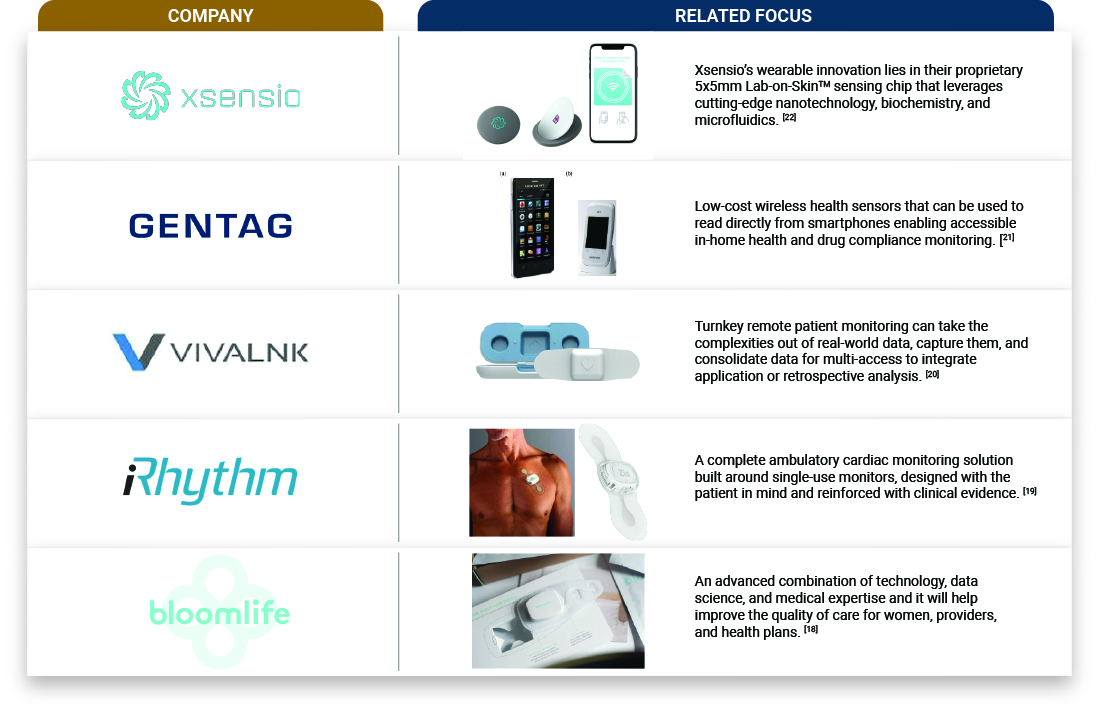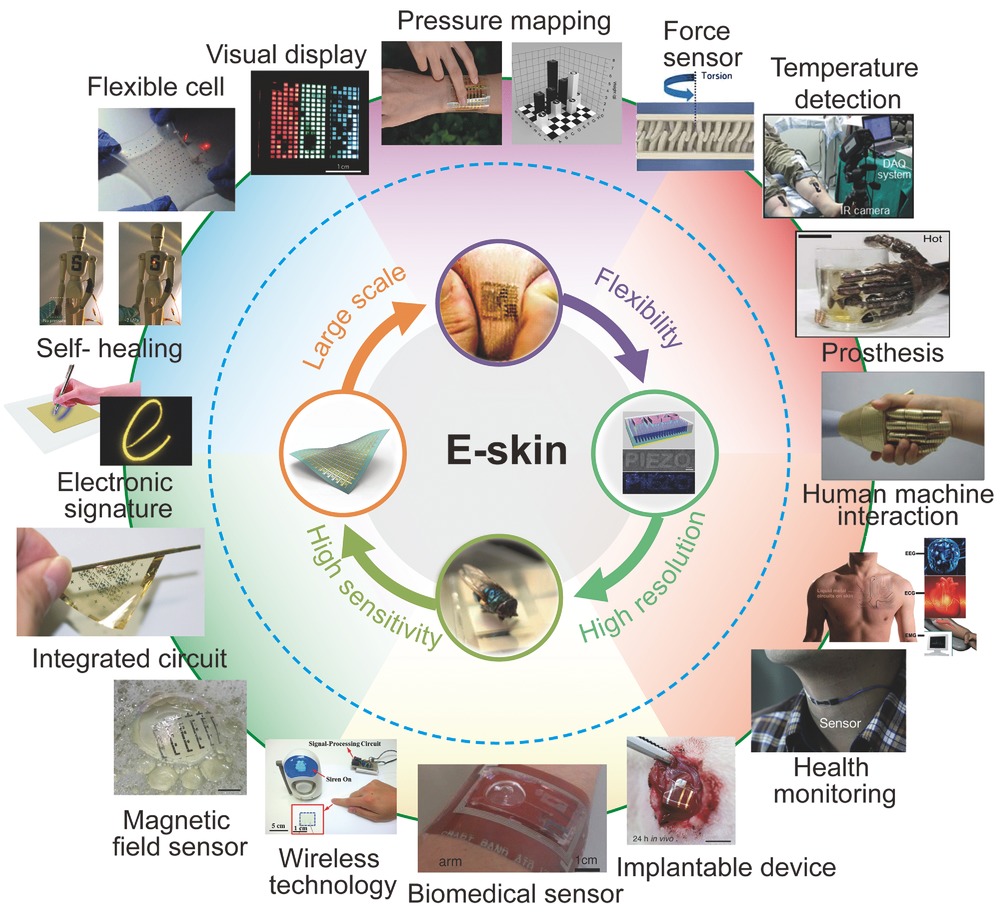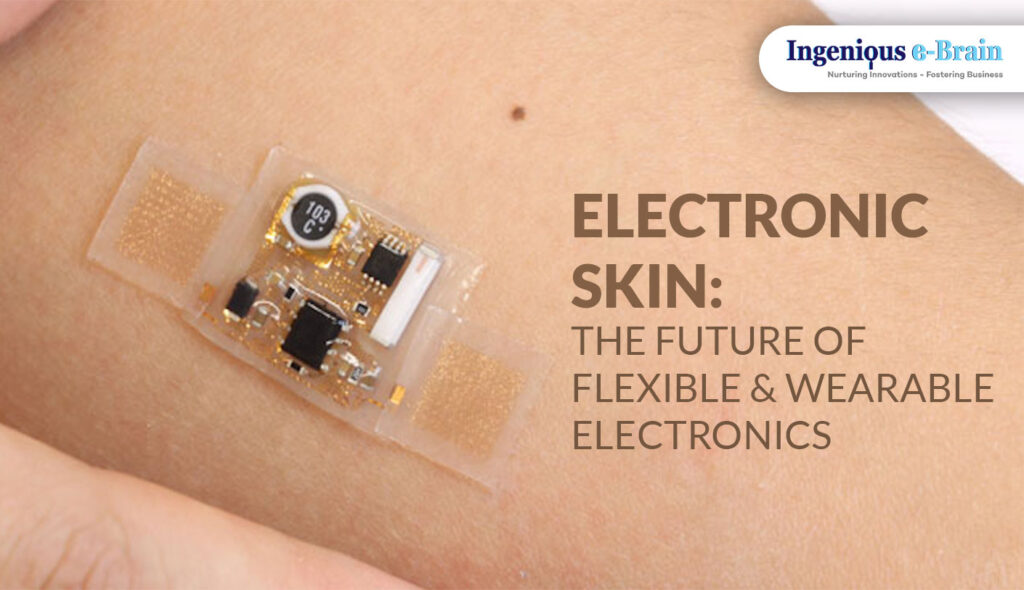Introduction
Electronic skin, also called e-skin, is a soft and stretchy electronic material that can be worn on the human body like a second skin. It is designed to mimic the properties of human skin and can be used to monitor various physiological and environmental parameters such as body temperature, blood pressure, and humidity. Electronic skins are typically made from a combination of flexible and stretchable materials such as polymers & elastomers and are integrated with sensors and electronic components that can detect & transmit signals wirelessly.
Some e-skin materials also incorporate nanotechnology, such as carbon nanotubes, to improve their conductivity and sensitivity. The e-skin has applications ranging from healthcare and medical monitoring to exercise and fitness tracking. For example, the electronic skin can be used to monitor patient vital signs such as heart rate and respiratory rate in real-time, enabling early detection of any health issues. It can also track athlete performance and improve their training regimens.
E-skin technology is still in its infancy, and there are challenges to overcome in terms of durability, power consumption, and scalability. However, through continued research and innovation, electronic skin has the potential to revolutionize healthcare, sports, and other industries by providing a transparent and unobtrusive way to monitor human physiology and the environment.
Use of Electronic Skin
E-Skins creates a new user interface that replaces the existing body-worn wearable devices to control external electronic gadgets. It can also integrate with multiple sensors that provide various opportunities in applications like security, robotics, and consumer electronics. They are prevailing in the medical industry as they can impart a sense of touch to robots which can help perform medical surgeries even without human contact.
As E-Skins are fabricated by layering an active nanomaterial that can attach to humans, they are among the major products that can be used for robots and prosthetics. They can be attached to humans providing every sensing information as real skin does. However, enabling spatial tactile sensing is essential for robotics and prosthetics, so the development of individual sensors and devices should be scaled up.

Several significant innovations have been made, and several more are in development, making breakthroughs in the field. These technological developments are rapidly moving towards flexibility, energy consumption, energy generation, renewable, self-healing, comfort, and sustainability. Thus, materials and energy providers are becoming more aware of the trends and are implementing new systems by making these gadgets affordable and user-friendly.
Key Developers and their Technology Focus
Electronic skin patch product areas in diabetes management and cardiac rhythm monitoring have superseded incumbent options in established markets, creating billions of dollars of new revenue each year for the companies at the forefront of this wave. However, success is not ubiquitous; each market discussed within this report sits within a unique ecosystem, with different players, drivers, limitations, and history to build on.
For each wearable industry, the concepts of electronic skin are different. Still, all of them revolve around providing the day-to-day data of the user to address various daily health concerns for different types of health concerns like blood pressure, diabetes, heart problems, daily food intake, and calories burned.
Recent commercial developments towards Electronic Skins:

Key Drivers, Inhibitors, and Market Opportunities
Electronic skin has the potential to revolutionize several fields, including health, robotics, and prosthetics. Here are some drivers, inhibitors, and opportunities for electronic skin:
Key Drivers:
Healthcare Applications: Electronic skin can be used to monitor vital signs and track the progress of various medical conditions.
Wound Monitoring: E-skin can be used to monitor the wound healing process. An e-skin device can be placed on the skin near a wound; it can measure parameters such as temperature, humidity, and pH. This information can be transmitted wirelessly to healthcare professionals, who can monitor the progress of the wound remotely.
Vital Signs Monitoring: E-skin can be used to monitor a patient’s vital signs, such as heart rate, blood pressure, and respiratory rate. The device equipped with sensors can measure these parameters when placed on the skin. Data can be transmitted wirelessly to healthcare professionals remotely monitoring patient health.
Drug Delivery: E-skins can be used to deliver drugs transdermally (through the skin). The device can be programmed to release a specific amount of medication at a particular time. This is especially useful for patients who have difficulty swallowing pills or need to take medication regularly.
Prostheses: E-skin can be used in prostheses to provide feedback to the user. Electronic skin sensors can detect changes in pressure and temperature, which can be used to create a more realistic and natural experience for users.
Virtual Reality Therapy: E-skin can be used in virtual reality therapy to create a more immersive experience for patients. For example, phobic patients can be exposed to virtual scenes that induce fear, and electronic skin devices can simulate physical sensations to create a more realistic experience.
Robots and prosthetics:
In robots, electronic skins could be used to improve their ability to interact with humans and their environment. For example, a robot with electronic skin could detect when it comes into contact with a person and adjust its movements accordingly to avoid injury. Electronic skins could also help robots better sense and navigate their environment, allowing them to avoid obstacles and move around more efficiently.
In prostheses, electronic skin could provide the wearer with a sense of touch, improving their ability to perform tasks and interact with the environment. For example, a person with a prosthetic arm with electronic skin could sense when they are holding an object and adjust their grip accordingly to keep it from slipping.
Increased investment:
In recent years, investment in electronic skin research and development has increased significantly, which has fostered innovation and progress in this field.
Some recent investments in e-skin technology include:
Xenoma, a Japanese company that develops e-skin for sports and healthcare applications, raised $4.5 million in a funding round in 2020.
MC10, a US-based company that develops wearable sensors and smart textiles, raised $10 million in funding in 2019.
VivaLNK, a US-based company that develops wearable medical devices and e-skin solutions, raised $10 million in funding in 2020.
Siren, a US-based company that develops e-skin socks for diabetes patients, raised $11.8 million in funding in 2020.
Tacterion, a German company that develops tactile sensors and e-skin solutions for robotics and automation, raised $2.6 million in funding in 2020.

Inhibitors:
Cost: The high cost of producing electronic skin results from the complex manufacturing processes, expensive materials, low production volume, and research & development expenses associated with the technology. As the technology matures and the demand for electronic skin increases, production costs are expected to decrease.
Durability: E-skins are still relatively fragile and can be easily damaged, making them less reliable for some applications. Electronic skins are usually made from thin layers of flexible materials such as polymers, less durable than traditional materials such as metals or ceramics. E-skin is designed to be flexible and elastic, which makes it more susceptible to mechanical stress. Electronic skin can be sensitive to environmental factors such as temperature, humidity, and UV exposure. These factors can cause the material to break down or degrade, reducing the durability of the e-skin.
Limited Functionality: Although e-skin can mimic some functions of human skin, its ability to sense certain stimuli or provide feedback is still limited. E-skin currently has limited sensory capabilities compared to human skin. For example, e-skin may not be able to detect certain types of sensations, such as pain, pressure, or temperature changes, as accurately as human skin can.
Key Opportunities:
Advanced Prosthetics: E-skins can be integrated into prosthetic devices, improving their functionality and enabling a more natural and intuitive user experience. E-skin can provide sensory feedback to amputees by simulating the sensation of touch, temperature, and pressure. E-skin can improve the comfort of prosthetic limbs by reducing friction and pressure on the skin.
Personalized Medicine: E-skin can help to personalize treatment plans by providing real-time patient health data. This data can be used to adjust treatment plans, such as changing medication dosages or adjusting the timing of treatments. E-skin can also be used for remote patient monitoring, especially for patients who live in remote areas or have difficulty traveling to a medical facility.
Recent R&D Developments in the Electronic Skin
Recent developments in electronic skins have focused on improving their sensitivity, durability, and overall performance. Here are some notable developments:
Self-Healing Electronic Skin: Researchers have developed electronic skin that can repair itself when damaged, much like human skin repairs itself. This has the potential to significantly extend the life of the e-skin and reduce the need for frequent replacement.
Multifunctional Electronic Skin: Some recent developments have focused on creating electronic skins that can perform multiple functions, such as simultaneously sensing pressure, temperature, and humidity. This could make e-skins more versatile and valuable in a broader range of applications.
Stretchable E-skin: E-skins have been developed to be stretched and bent without breaking, making them more durable and better able to withstand wear and tear. This might make it more suitable for use in clothing or other flexible materials.
Increased Sensitivity: Researchers have worked to increase the sensitivity of electronic skin for detecting and responding more accurately. This could make it more useful for applications such as prosthetics or robotics.
In general, recent developments in electronic skins have focused on improving their functionality and performance, making them more practical and useful for a variety of applications in areas such as healthcare, robotics, and wearable technology.
Future Outlook
Electronic skin, or e-skin, is an emerging technology that aims to create a flexible, lightweight, and stretchy material that can sense and react to environmental changes, much like human skin. The development of electronic skin has the potential to revolutionize a wide range of fields, including robotics, medicine, and wearable devices.
The future looks bright for electronic skins as advances in materials science and engineering continue to improve their performance and functionality. Some potential developments in the emerging applications of electronic skins include:
Robotics: Electronic skins could be used to create more human-like robots that can sense and react to their environment in real time. This is particularly useful in applications such as search and rescue, where robots can be deployed in hazardous environments to locate and rescue people.
Health: E-skin can be used to monitor a patient’s health in real-time, providing doctors with important information about the patient’s vital signs and overall health. This could lead to more personalized and effective treatments for various medical conditions.
Wearables: E-skins can be used to create more comfortable and natural wearables than current wearable technology. For example, electronic skin could be integrated into clothing to monitor a person’s posture, detect falls, and even measure their stress level.
Overall, the future looks bright for e-skins, and the technology has the potential to make significant breakthroughs in a wide range of areas.
However, there are still challenges to overcome before e-skin becomes a mainstream technology, such as improving the durability and reliability of e-skin materials.
Article by Ingenious e-Brain:-
Contact us:-
US Office:-
4 Heinrick Way Bridgewater,
New Jersey 08807, USA
Phone:-
+1 347 480 2054
+1 202 697 9162
India Office:-
207-208 Welldone TechPark, Sohna Road
Sector 48, Gurugram, Haryana 122018, India
Phone:-
+91 124 429 4218
Email:-
queries@localhost


